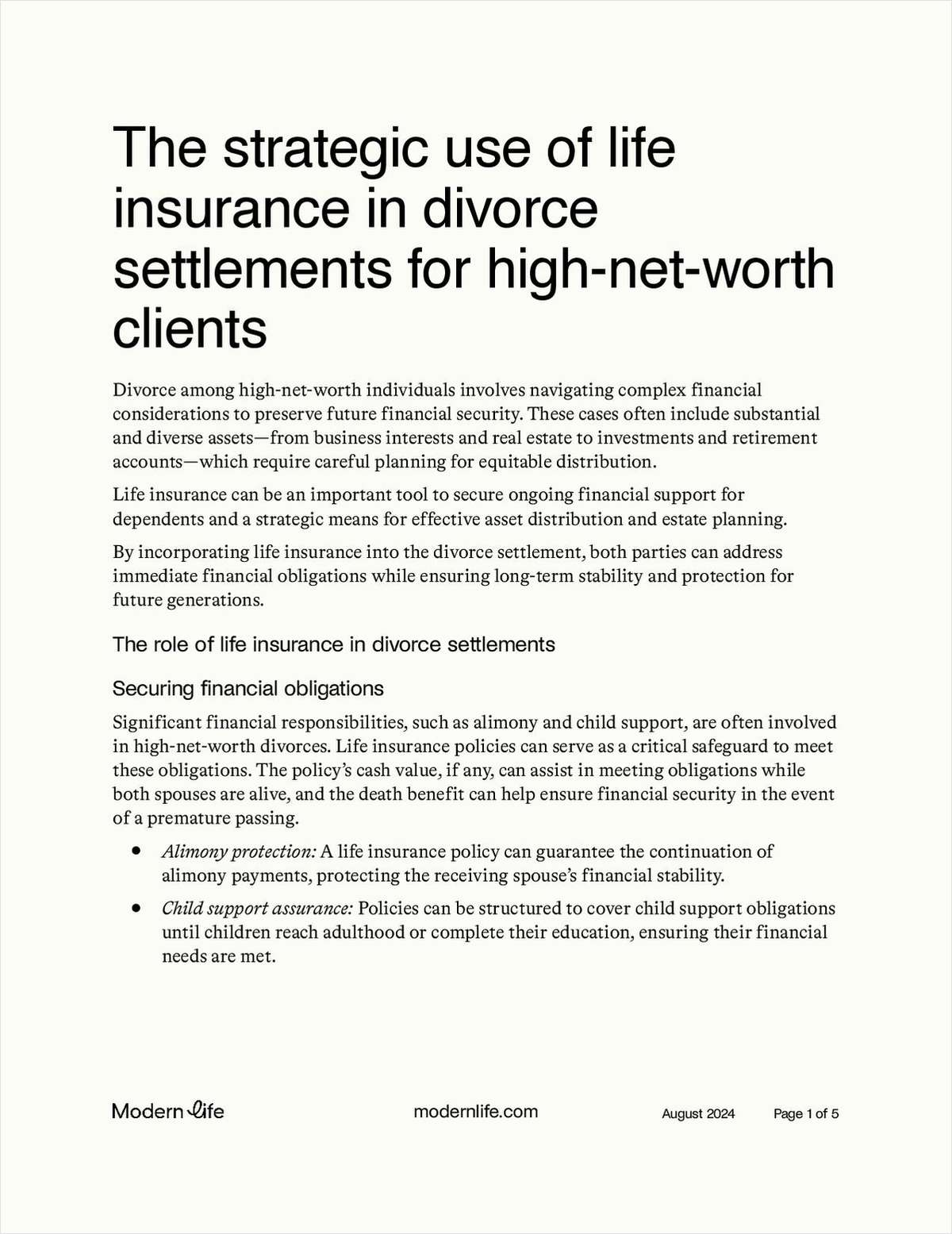Unless you've been living under a rock for the past few years, chances are you've heard some industry pundit espousing the idea that you should "fire" your least profitable (read: least wealthy) clients in order to spend more time serving people who bring in more dough to your firm. This process is couched in phrases like "target clientele," "core competencies," and "leveraging resources," but the basic idea is still this: Despite the fact that your least wealthy clients could be the same folks who took a chance on you back when your firm was struggling to get off the ground, you're supposed to invite them to your office, cheerfully tell them, "I'm sorry, but you're just not rich enough for me anymore," and promptly hurl them out on their ears. "Ah, well, that's done!" you'll say brightly, dusting off your hands and marching back to your desk, refreshed and invigorated by your foray into tough-minded decision-making. "Boy, I sure feel great now!"
Actually, unless you're a direct descendant of Scrooge, you probably don't feel great at all. And you shouldn't, says Don Schreiber, president and CEO of Wealth Builders, Inc. in Little Silver, New Jersey. "I think firing clients because they don't meet our current profile of assets is just unconscionable," he says. "Imagine you've been with me as a client for 15 years: You're fairly dependent on me and you're happy with my services, and then I decide you no longer 'fit my client profile' and I fire you. I can't see how that is placing the clients' interests first."
More to the point, at least in Schreiber's mind, is the fact it doesn't make much business sense, either. "If you have someone who has been satisfied with your services for 10 or 15 years, there's tremendous goodwill there," he says. " The last thing you want to do is tell them you're no longer willing to work with them." Schreiber isn't necessarily out beating the bushes for poor and downtrodden clients (he admits that his " ideal client" has $1 million or more to invest, and his asset management fee starts at an unusually hefty 2%). It's simply that booting happy clients doesn't make sense.
All this, of course, brings us to the question: If you're a primarily fee-based firm, how can you make your firm more profitable, or at least more manageable, without cutting clients who have smaller portfolios? How can you serve an ever-burgeoning number of clients efficiently and effectively without losing your mind?
Hire the Young
Schreiber's answer to this dilemma is simple: Hire more people. And, after some not-so-hot experiences trying to hire people with experience in the profession, he's added a qualifier: Hire young people. "I tried to hire people who were already in the industry, and we were constantly frustrated," he says. Experienced people invariably had entrenched ideas about how to run a business, and those ideas didn't necessarily meld with his. So, rather than fighting to uproot an experienced employee's firmly held beliefs, Schreiber decided he would "build superlative planners from the ground up" instead. It's much more expensive to train newbie planners than to simply recruit old-timers who come complete with a full book of business, he notes. But the end result is much more successful, he says–not to mention more rewarding.
Schreiber's first brush with mentoring new planners came when he hired his first associate planner 15 years ago. Bob Confessore, now the firm's second principal, had had very little experience with high-net-worth custom financial planning, and Schreiber acted as a mentor for him for several years. After that, the two conducted their experiment of hiring industry veterans, with little success.
Then, in 1999, while attending IAFP annual conference in San Antonio, Schreiber mentioned to a colleague that he was looking to hire someone new, and was willing to provide training. The colleague sent him to Texas Tech University's exhibit booth, and there Schreiber met Jeremy Hudson, then a financial planning major at the school. That conversation led to an interview at the conference, and a few months later, Hudson was on a plane to New Jersey to check out Schreiber's firm. He took the job.
"I really liked what he had to say: He really sold me on the fact that he'd developed a training program, and offered a salary, and would allow me to work with clients from day one but not throw me in on my own," says Hudson, now 25. "The professors at our school really stressed that we should find a place that would challenge us, and had a training program, and actually provided comprehensive financial planning (since, after all, that's what we'd gotten an education in), and wouldn't make you 'eat what you kill' from day one. So it was a wonderful fit."
Needless to say, Schreiber was equally thrilled–so thrilled, in fact, that over the subsequent years, he's hired three more Texas Tech graduates right out of school. Hudson jokes that during football season it's as if they have their own little alumni association right in the office, and one can only imagine the number of clients surprised to hear "Howdy, ma'am" in a southern drawl when they're expecting to hear "How you doin'?" in a Tony Soprano accent instead.
Primed for Growth
These young Texans are the key players in Schreiber's plans for the firm's growth. As they gain experience, they'll take on increasing responsibilities and enable the firm to serve more clients.
Schreiber's goals for the growth of Wealth Builders Inc. are so gargantuan as to almost sound funny: In the next four to five years, he hopes the firm's clientele will quintuple in size, from 200 clients to approximately 1,000. He believes his company is set up to handle this enormous influx of clients. The firm, an RIA that is also affiliated with an independent B/D, IFG Network Securities, is divided into three separate segments with a hierarchical staff structure within each. The planning branch includes senior planners, associate planners, and planning specialists. In money management, there is a VP/portfolio manager, assisted by an operations assistant and a research analyst/trader. In corporate operations, there's a manager of operations, assisted by technology and operations specialists. The hierarchy protects Schreiber from the dreaded "cog in the wheel" syndrome–being a principal so indispensable to all aspects of the firm that he can never go on vacation–and it also provides a defined career path for the planners who join his firm.



